TPP e201
Can AI generated art be copyrighted? Can AI generated art be used in client presentations? Troy, Nolan and Sandy spend this episode going through the many online articles they amassed on the topic of the legal use highlights of AI generated content. While no guidance is provided, it is a lively conversation!
Join the conversation through your favorite podcast app, or online at the episode page with shownotes here.
#5. Behind-the-Scenes PowerPoint Issues
Presentation files sizes can be large. They can be massive. But not all large files need images that are overly large. Often the bloated PowerPoint file size is from images that are too large (aka Massive Images) for what is needed. Because bigger is not always better.

As example. If the presentation is being shown on a 1920×1080 pixel (“HD”) screen, it does not need 8000 pixel wide images. Technically PowerPoint uses 96 DPI, most everything is based on 72 DPI, and the TLC standard is to work at 150 DPI. But inserting “print resolution” 300 or 600 DPI images is not going to project better than an optimized image, it just make the file size larger than it needs to be.
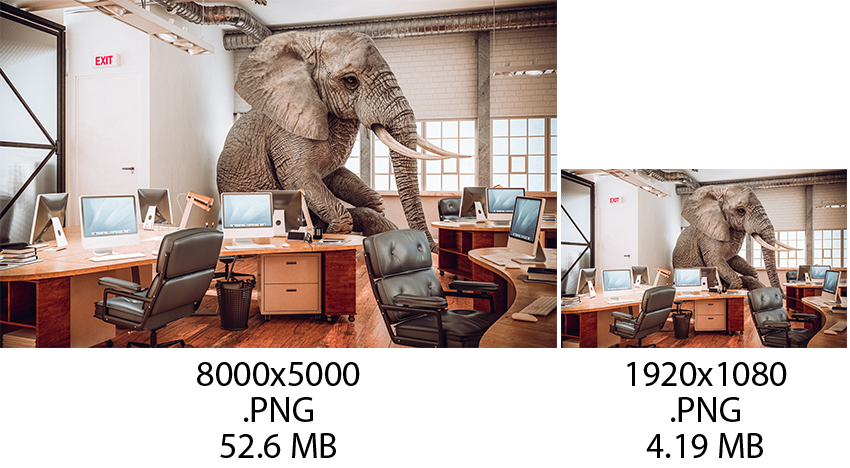
Large PowerPoint file size takes longer to open, longer to save, and depending on the computer specs, those large images can affect PowerPoint’s performance, especially with animations and slide transitions. Motion glitches, animation lag, slide advance lag, all the way to PowerPoint freezing or crashing are real concerns from large file size created by massive images.
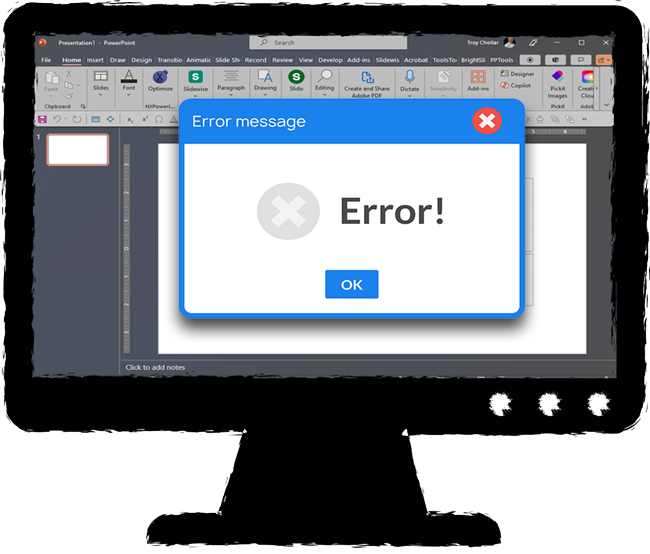
SOLUTIONS
At TLC Creative, we are not fond of Microsoft PowerPoint’s native image compression tool. In general we find it does less than our preferred third-party solution (see below), overly compresses images to the point of visual quality loss, and is a clunky interface.
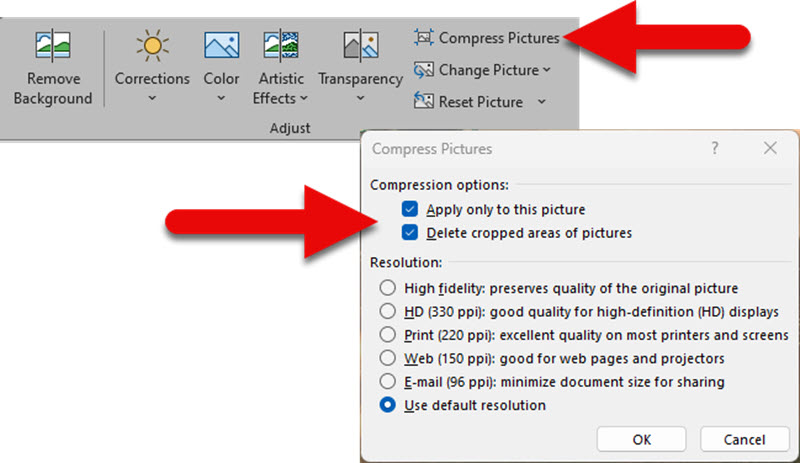
Neupower’s NXPowerlite add-in is our go-to solution for optimizing images in a presentation. TIP: setup customized compression preset profiles for tailored results.
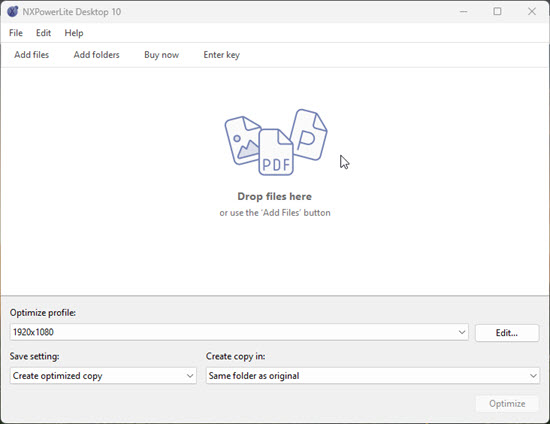
There are many options and hacks for updating a Microsoft PowerPoint presentation with optimized images. The key is to have optimized presentations with images optimized for the intended use. Our presentation projects vary and our optimization (eg. NXPowerlite profile) varies to match. The above example is an HD, 1920×1080, presentation, which is probably the most common presentation need. But another presentation project was a presentation that spanned 3 LED walls and was 8448×1024 px for the PowerPoint. Different optimize needs for each project, but we can assure that each presentation included only optimized images to avoid massive presentation files.
Troy @ TLC
#4. Behind-the-Scenes PowerPoint Issues
Hidden slides are very common in Microsoft PowerPoint presentations. However, PowerPoint’s built in UI doesn’t do a great job at making the hidden slides apparent. The slide sorter view has a small slash through the slide number, and the slide is subtly greyed out which can be easy to miss when scanning through a large number of slides. Identifying hidden slides becomes a “Where’s Waldo” search!

[image generated through Midjourney]
Microsoft PowerPoint’s latest interface is stylish, but the small, subtle, almost imperceptible slash indicating the slide is hidden is not obvious when reviewing slides.
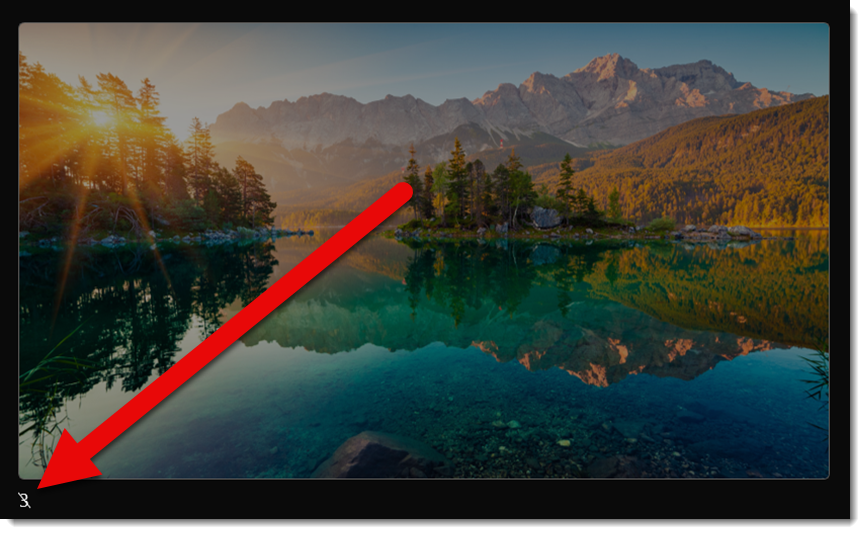
Here is the sample slide deck for this post:
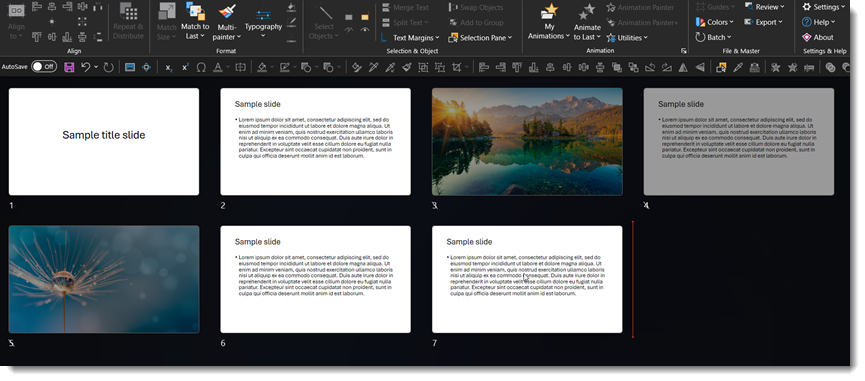
At TLC we add a .png “hidden” image to the help the hidden slides standout (download the Hidden ping at this September 2006 blog post).
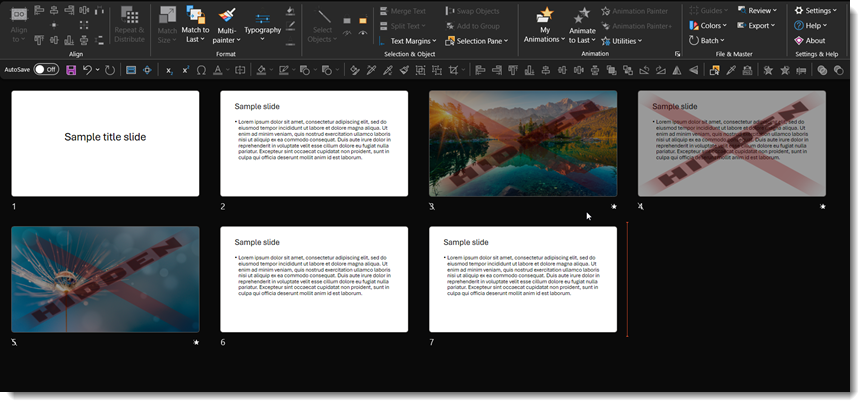
Same thing when printing slides. In a slide sorter/light table layout, there is NO indication of a slide being hidden.
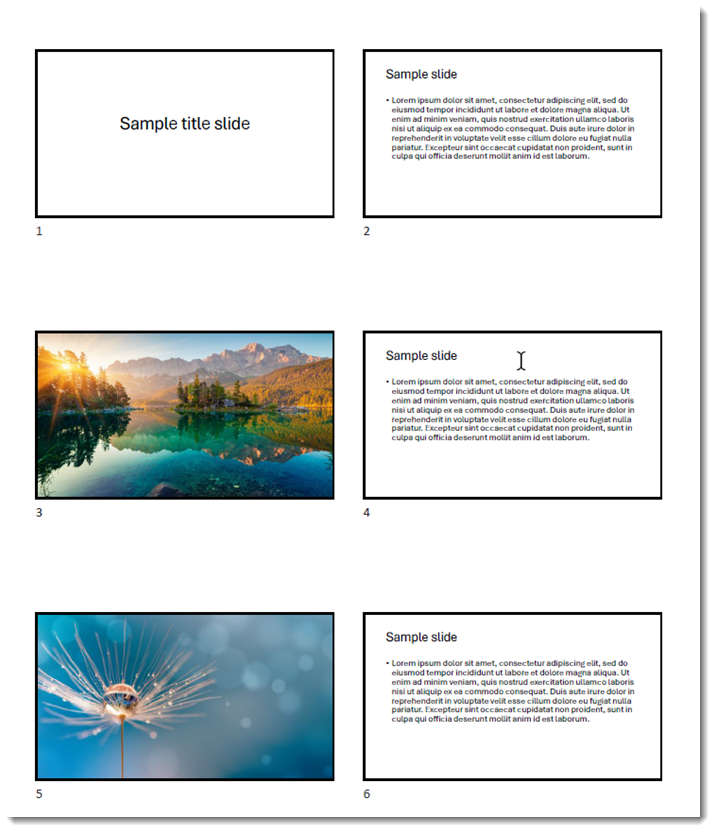
This can cause problems when presenters review the presentation. Do they know the slides are hidden and not part of the slide show? This scenario is a regular occurrence during onsite meetings, and we hear from the stage – during the meeting – “Well, some of my slides are missing”. Because the presenter reviewed a printout, or PDF, of the slides and had no way to know some of the slides are hidden and not part of the slide show.
Again, the TLC solution is adding a hidden overlay image, which makes it easy to identify slides that are NOT part of the slideshow.
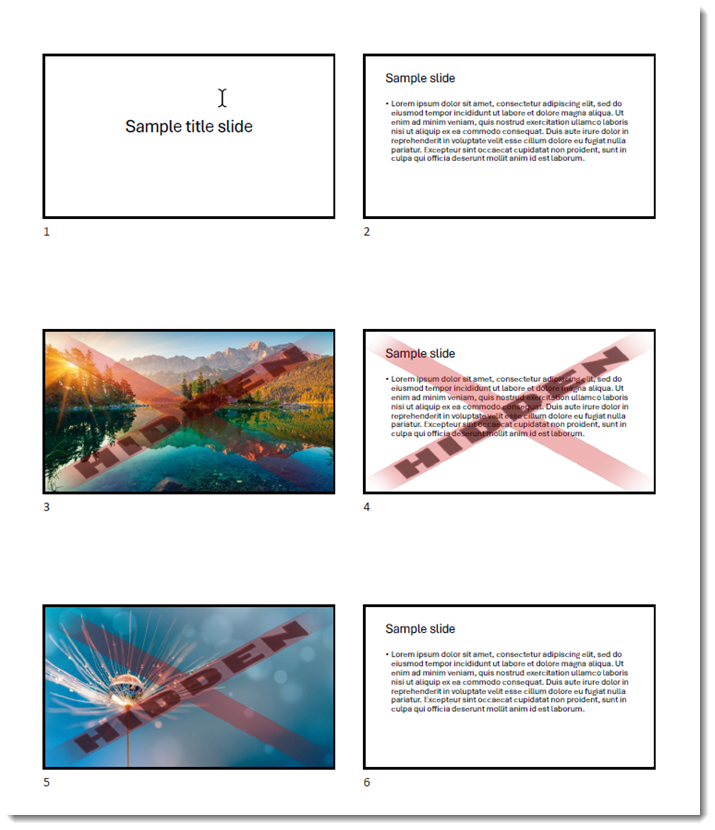
Hidden slides are an amazing option. But the interface is not designed to aid presenters. When a hidden slide is noted in a Microsoft PowerPoint presentation, confirm with the presenter they know it is hidden (and not part of the slideshow)!
#3. Behind-the-Scenes PowerPoint Issues
Slide page numbers are a nice feature to utilize in Microsoft PowerPoint for the speaker to keep track of the presentation. But are the page numbers in your presentation setup and used as designed?
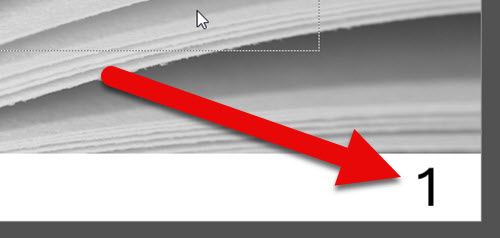
Page numbers are an easy automated element in PowerPoint when setup correct.
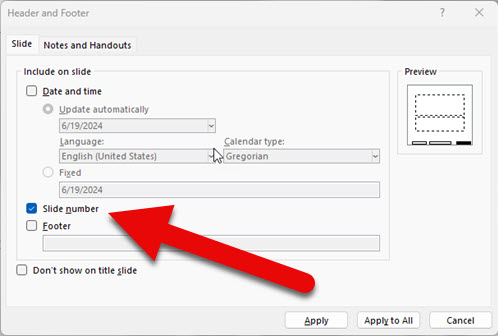
While page numbers may display on slides, that does not equate to setup correct. And not being setup correct is something the TLC Creative presentation design team spends literally hours fixing (time that does not need to be added to the project invoice if setup and used correct) if not set up properly.
Before talking about setup and use issues, let me address this common question – should page numbers be used at all?
The conversation is generally about how page numbers take up unnecessary space, they don’t benefit the audience, and often are not formatted consistent throughout a presentation. Ultimately, it is up to the presenter. But if the presentation template is preset for page numbers, which also enables them to be turned on/off in 3 clicks, then TLC Creative finds the value in page numbers. We like to keep page numbers active on all slides during the design and rehearsal phases for easy reference to what slide has revision requests. Then we turn them off for the actual presentation.
Page Number Problems
Problem 1: Manually adding a text box with the page number to a slide. This is short term thinking. What if the slide count changes? What if the real slide numbers are turned on and now the slide has two different slide number text boxes on the slide?
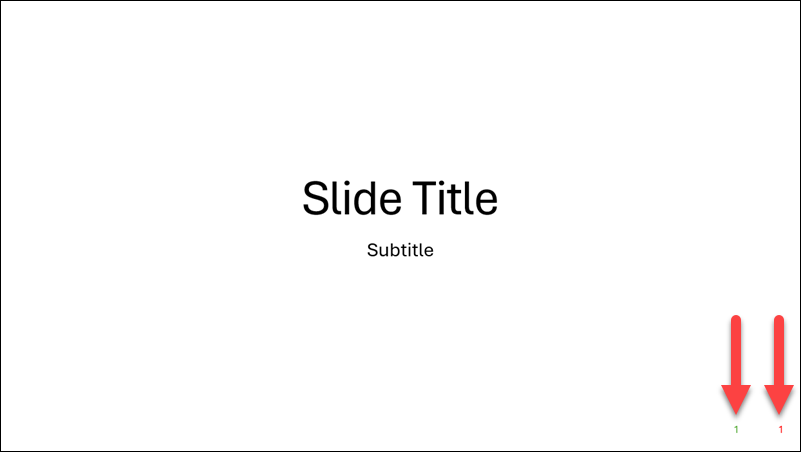
Problem 2: Slide numbers are added as hard-coded text boxes “<#>” that are not linked to the slide number footer. While this works, it is also short term planning. What happens when slides move into another presentation and have hard-coded text boxes?
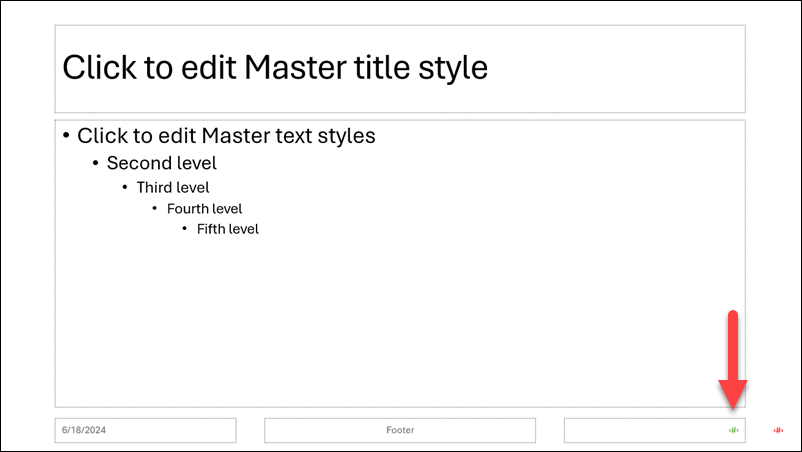
Problem 3: Slide number text is in different position and text formatting across slides. This goes back to properly setting up the master slide within Microsoft PowerPoint. Using the preset slide number text placeholder position and formatting is the best way to maintain consistency throughout the presentation. Then resetting the slide will update text boxes to be consistent (Microsoft – why is there not an option to just reset the footer placeholders formatting and not the full slide!).
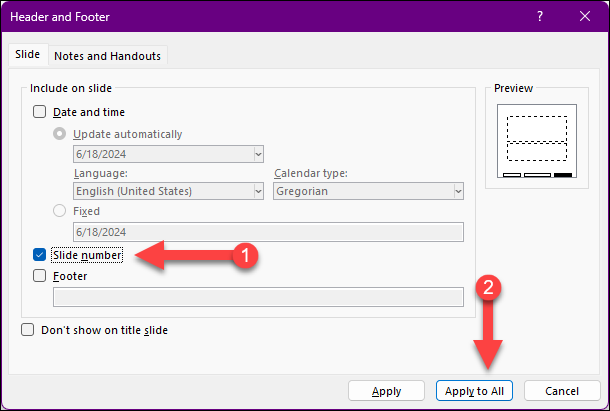
The key is being able to use Microsoft PowerPoint’s HEADER AND FOOTER feature that instantly can add, or remove, slide numbers from a selection of slides or the entire slide deck in 3 clicks. Remember, a text box will display the page number; however if that text box is not linked to the master slide footer placeholder for text boxes it is more of a problem than help, because only slide number footer text placeholders are programmed to function with the header/footer dialog options.
How Does It Work?
The good news is, it just works. There are no options or settings. Just go to INSERT > HEADER & FOOTER (or SLIDE NUMBER) > on the HEADER AND FOOTER dialog > check or uncheck the “Slide Number” box > click “Apply” to change just the selected slides, or “Apply to All” to change all slides in the presentation*. Done!
TIP *: “Apply to All” only applies to all slides that use that Master Slide. If the presentation has multiple master slides (see Issue #1 in this series on multiple masters) slide number formatting and just turning on/off requires more effort.
TIP: Turn off slide numbers on all slides, using the HEADER AND FOOTER Apply to All. Then review slides to identify which still show a slide number. It is either a manual text box on the slide, a slide number footer that has lost its link to the placeholder (Microsoft, why is not possible to reconnect slide text boxes to master placeholders!), a master slide that has multiple slide number text boxes, or the another master slide that needs to have page numbers turned off (and then on when review complete).
Page numbers can become a burden in slide formatting, or if setup correct, that can become a valuable asset (or at least not a frustration!).
Episode 200 of The Presentation Podcast releases today!
What started in 2016, and is celebrating its 200th episode today? The Presentation Podcast!
At 2 episodes per month, 24 conversations per year, and a predictable episode #200 in year 9. That’s what this conversation is all about, celebration, fun conversation – and 50 special guests!!
Listen at your favorite podcast app, or online here.
#2. Behind-the-Scenes PowerPoint Issues
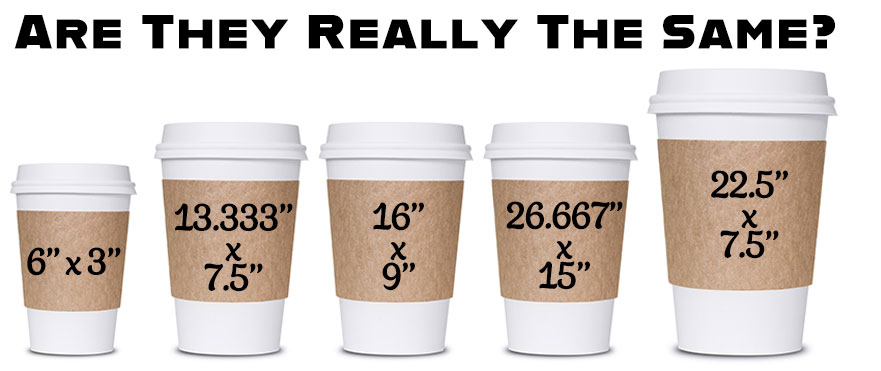
“16×9″ is an aspect ratio, not a size (although, if it is 16″ x 9” it can be a size…). “16×9” is the current standard HD rectangle shape, or aspect ratio used by almost all computer monitors, projectors, TVs, etc.
When coordinating presentations for a multi-presenter event, the goal is to string all of the Microsoft PowerPoint presentations into a single master presentation. The behind-the-scene-settings of the actual page size of each presentation is really-really important. And the industry standard is PowerPoint’s standard page size for “16×9″ which is 13.333″ wide by 7.5” tall.

As example, there are 5 presenters. The 5 presentations are all “16×9” but they have the following page sizes:
- 13.333×7.5″ (Microsoft PowerPoint standard page size)
- 16″x9″ (a literal interpretation of “16×9”)
- 10×5.625″ (legacy PowerPoint widescreen page size – this is old!)
- 10×5.625″ (Google slides presentation converted to PowerPoint – why is this the Google setting?)
- 26.667×15″ (Apple Keynote presentation converted to PowerPoint)
While all of these files are a 16×9 aspect ratio, combining them into a Microsoft PowerPoint single file can become a nightmare. Merging different page sizes will create issues such as text boxes changing size and changing text line wraps, content being out of position and alignment, master slide logos and other art becoming distorted, and overall creates a situation where slides do not display as expected.
There is no easy fix for this scenario, it’s a manual process of updating the presentations page sizes and reviewing for edit needs before merging – ugh.
The takeaway for presenters is that the behind-the-scenes presentation setup can have big impacts on how your slides are displayed. And for presentation designers, be aware of checking presentation page sizes, because miss-matched sizes can create many content layout issues.
Troy @ TLC
#1. Behind-the-Scenes PowerPoint Issues
My #1 behind-the-scenes of PowerPoint issues is Master Slides. Note, PowerPoint’s Master Slides, ability to have multiple masters, options to assign different background styles to individual master layouts, and more are all fantastic. But the option to “Keep Source Formatting” was well intentioned, but as an unchecked option it can literally cripple a presentation!
Let’s use this client supplied presentation file as an example of what I experience virtually daily.

This is a single 46 slide presentation for 1 presenter. The slides are beautiful and a fantastic presentation. But looking behind-the-scenes, this PowerPoint file has 15 separate Master Slides – that is 16 templates embedded in the file!
I can easily identify that the “Keep Source Formatting” feature was used several times. Because…
- 7 of the Master Slides are named the PowerPoint default “Office Template” and duplicates of each other.
- 6 of the Master slides are the event template that has been inserted 6 duplicate times.
- And the 2 yellow Master slides are truly unique inserted templates.
Of note, after formatting the presentation, with none of the content visually changed, all was consolidated to 1 Master slide.
File Size:
- The provided presentation, with it 16 embedded templates, was 189 MB.
- Consolidating to a single template, the event template, reduced the file to 132 MB (there was 67 MB of content in the unneeded Master Slides!).
- Further, optimizing the images with NXPowerlite, updated the presentation to 56 MB!!
Troy @ TLC


